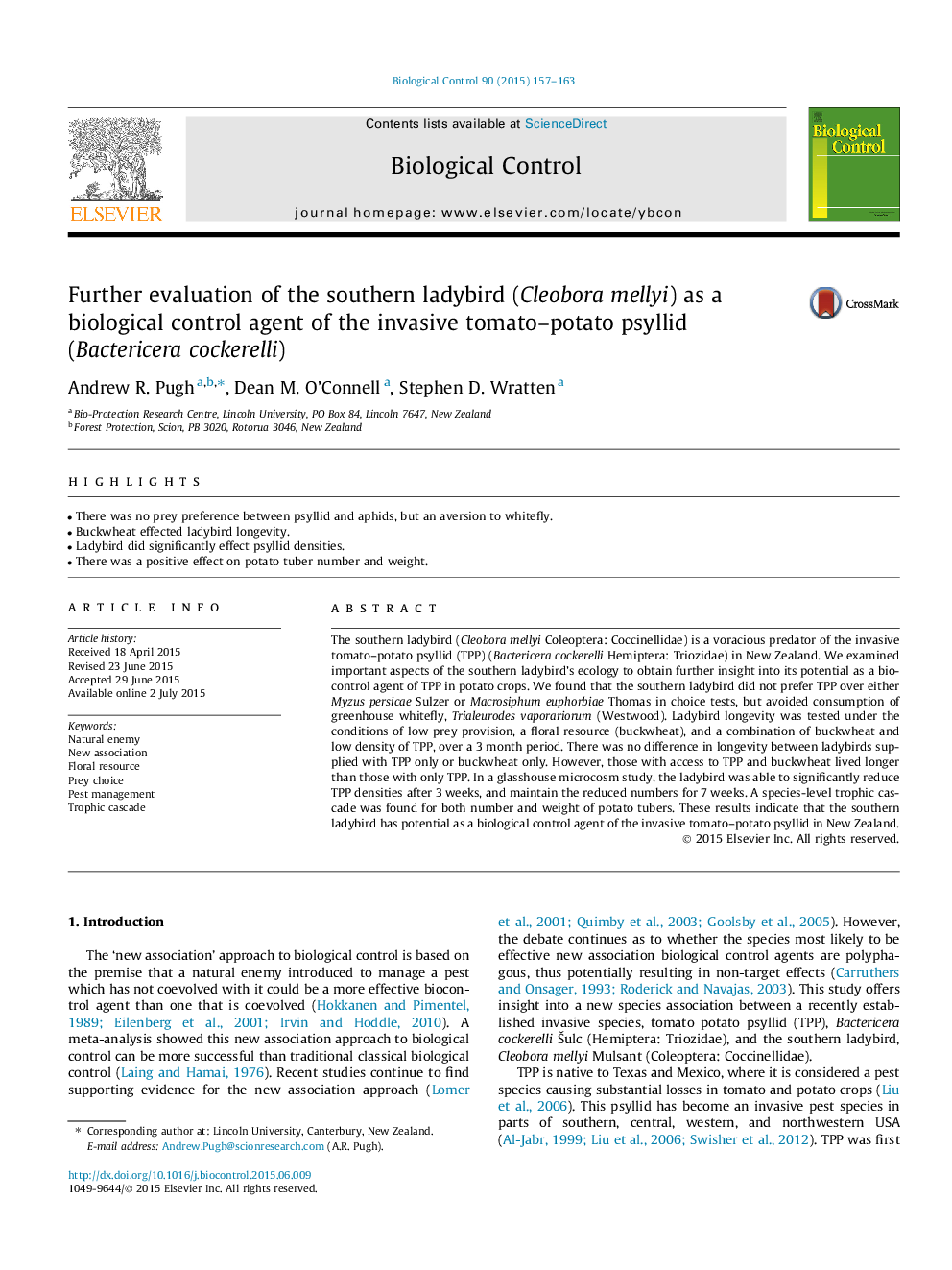| Article ID | Journal | Published Year | Pages | File Type |
|---|---|---|---|---|
| 6372536 | Biological Control | 2015 | 7 Pages |
Abstract
The southern ladybird (Cleobora mellyi Coleoptera: Coccinellidae) is a voracious predator of the invasive tomato-potato psyllid (TPP) (Bactericera cockerelli Hemiptera: Triozidae) in New Zealand. We examined important aspects of the southern ladybird's ecology to obtain further insight into its potential as a biocontrol agent of TPP in potato crops. We found that the southern ladybird did not prefer TPP over either Myzus persicae Sulzer or Macrosiphum euphorbiae Thomas in choice tests, but avoided consumption of greenhouse whitefly, Trialeurodes vaporariorum (Westwood). Ladybird longevity was tested under the conditions of low prey provision, a floral resource (buckwheat), and a combination of buckwheat and low density of TPP, over a 3Â month period. There was no difference in longevity between ladybirds supplied with TPP only or buckwheat only. However, those with access to TPP and buckwheat lived longer than those with only TPP. In a glasshouse microcosm study, the ladybird was able to significantly reduce TPP densities after 3Â weeks, and maintain the reduced numbers for 7Â weeks. A species-level trophic cascade was found for both number and weight of potato tubers. These results indicate that the southern ladybird has potential as a biological control agent of the invasive tomato-potato psyllid in New Zealand.
Related Topics
Life Sciences
Agricultural and Biological Sciences
Agronomy and Crop Science
Authors
Andrew R. Pugh, Dean M. O'Connell, Stephen D. Wratten,
